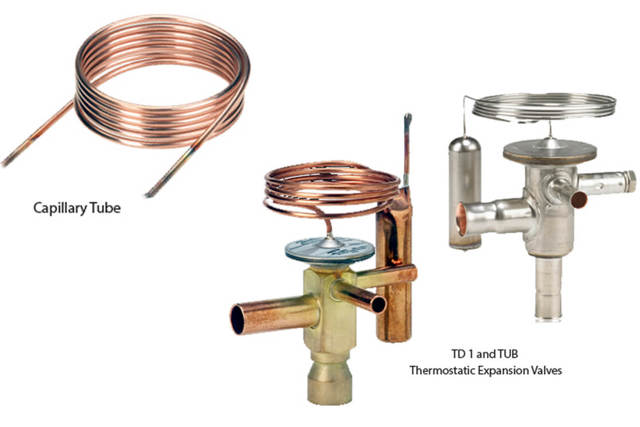With a growing focus on reducing their environmental footprint and reducing costs, manufacturers of Glass Door Merchandisers (GDMs) are looking for alternatives to optimize their equipment in order to save energy and improve the efficiency of the system.
Depending on the condition of the equipment and the environment, choosing the right component can bring significant advantages. This article analyzes two of the most common expansion devices: capillary tube and thermostatic expansion valve (TXV).
A popular topic these days is how we can help reduce our impact on global warming. When considering this, it is important to remember the Total Equivalent Warming Impact (TEWI). The TEWI is the sum of both direct emissions and indirect emissions of greenhouse gases.
Direct emissions are caused by the particular refrigerant used and can be lowered simply by using a more environmentally friendly refrigerant, such as propane or CO2. Indirect emissions come from the system’s energy consumption which means there can be multiple ways to address this concern. While it is possible for some of us to replace our energy source with renewable energy, like solar or wind, others may not have that option. Instead, they will need to reduce their system’s level of energy consumption by making the system more efficient.
Glass door merchandisers (GDMs) consume a lot of energy and there are many of them currently in operation, with numerous businesses owning multiple units. And while there have been steady improvements over the years, opportunities still remain to further improve their energy efficiency.

